International Hunts
The Dunham name has long been connected with world-class hunting in Canada and Africa, but our reach does not end there. Through select partnerships and carefully chosen concessions, we also offer hunters access to exclusive international destinations across Europe, Asia, Oceania, and the Americas.
From stalking desert bighorn sheep in the mountains of Mexico, to climbing the Pyrenees in Spain for ibex, to glassing the Southern Alps of New Zealand for tahr and roaring red stags, these hunts are built for those who want to expand their horizons and pursue trophies in some of the most iconic places on earth.
Every destination is carefully evaluated for quality of game, sustainability of herds, and professionalism of outfitters. We work only with proven teams who share our values of ethical hunting, disciplined management, and premium client experience. The result is the same consistency hunters expect at Dunhams High Caliber Ranch—delivered worldwide.
This International Hunts program is designed to give you access to species that cannot be hunted in Canada or Africa. Whether your goal is a Marco Polo sheep in Tajikistan, a roaring red stag in Argentina, or a muskox on Greenland’s tundra, these trips are tailored to serious hunters who want the best in trophy quality and experience.
Mexico — Desert Bighorn Sheep, Coues Deer, Gould’s Turkey & Desert Mule Deer
Desert Bighorn Sheep

The crown jewel of Mexican hunting is the desert bighorn sheep. These rams are one of the most coveted trophies in the world and form part of the prestigious North American Sheep Grand Slam. Desert bighorn hunts in Mexico are carefully managed with limited permits to ensure sustainability. Hunters can expect challenging climbs across rocky desert mountains, glassing long distances, and strategic stalks to get within range of mature rams. The best hunting season is December through March, when rams are more active and weather conditions make for longer, productive hunting days.
Coues Deer
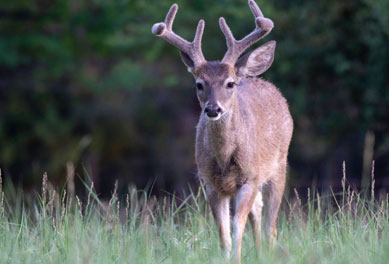
Often called the “Gray Ghost of the Desert,” the Coues whitetail deer is one of the most elusive animals in North America. Native to northern Mexico and southern Arizona, these deer are much smaller in body than typical whitetails, but they make up for it with their wariness and sharp senses. Hunts typically involve long hours of glassing desert ridges and canyons until a buck is spotted. Then comes the stalk, often over rough terrain and under a hot sun. Trophy quality is excellent, with bucks ranging in size but offering a unique whitetail hunting challenge. The prime season is December to February, when rut activity peaks and bucks are most visible.
Gould’s Turkey

Desert Mule Deer
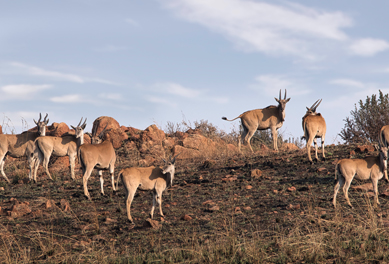
The desert mule deer of northern Mexico represent another exceptional trophy species. Mule deer here often grow larger antlers compared to their counterparts in the U.S. Southwest, thanks to excellent genetics and proper management. Hunts usually take place in desert flats, mesquite thickets, and cactus country where hunters glass and stalk until they’re within range. Trophy mule deer in Mexico regularly surpass 180 inches, making this one of the best destinations in the world for serious mule deer hunters. Prime hunting is in December and January, coinciding with the rut.
Why Hunt Mexico?
Mexico offers something for nearly every big game hunter. Desert bighorn hunts are among the rarest and most prestigious tags you can acquire. Coues deer challenge even the most seasoned whitetail hunter. Gould’s turkey provides the finishing piece of a World Slam. And desert mule deer rival the best trophies from Arizona and Utah
Spain — Ibex, Red Stag, Roe Deer, Chamois & Wild Boar
Spanish Ibex
Spain is best known for its four subspecies of Spanish ibex: Beceite, Gredos, Ronda, and Southeastern. Each inhabits a different region of the country, and many hunters aim to collect all four as part of the “Spanish Ibex Grand Slam.”
- Beceite ibex are found in the eastern mountains, known for long, lyre-shaped horns.
- Gredos ibex, the largest of the four, live in the Gredos Mountains near Madrid.
- Ronda ibex are the smallest, found in southern Spain’s rugged hills.
- Southeastern ibex live in the rocky mountains near Granada.
Ibex hunts usually involve spot-and-stalk across rugged, rocky terrain with glassing from long distances. The rut occurs in November and December, but hunts are possible from late autumn into spring, depending on the subspecies.
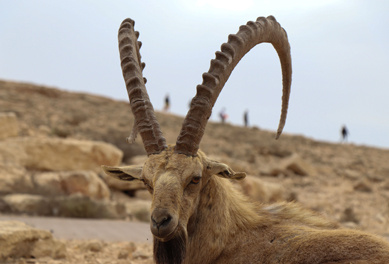
Red Stag
Spain also offers excellent red stag hunting, a European equivalent to elk. Spanish stags are typically pursued during the rut, or “berrea,” which occurs in September and October. During this time, stags roar loudly to establish dominance and gather harems of hinds. Hunts can take place in forested hills, agricultural valleys, or open plains, with roaring stags providing one of the most dramatic hunting experiences in Europe.

Roe Deer
Another highlight in Spain is the roe deer. These small, graceful deer are widespread throughout the country. The prime hunting period is in spring and summer (April–July), with an additional rut window in late July and early August. Spot-and-stalk is the preferred method, often requiring careful glassing and patient shooting. Roe deer may not be the largest species, but their antlers are delicate and unique, and they’re a sought-after trophy for international hunters.
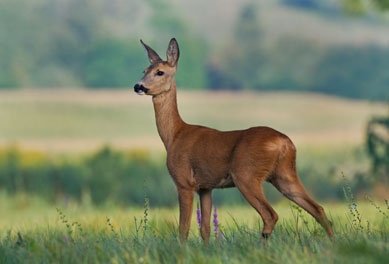
Chamois
In the Pyrenees and Cantabrian Mountains, hunters can pursue chamois, a nimble mountain antelope known for its speed and agility. Chamois are typically hunted at higher elevations, making this a physically demanding adventure. The best hunting occurs in autumn and winter when coats are thick and conditions are stable.
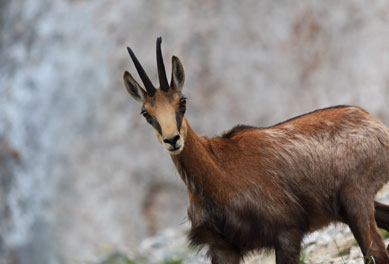
Wild Boar
Perhaps the most traditional hunt in Spain is the driven wild boar hunt, known as a montería. Hunters line up in positions while beaters and dogs push game through valleys and ridges. Boar charge through at high speeds, and quick, accurate shooting is essential. These events are as much about culture and camaraderie as they are about trophies. The best seasons are autumn through winter, when monterías are held across the country.
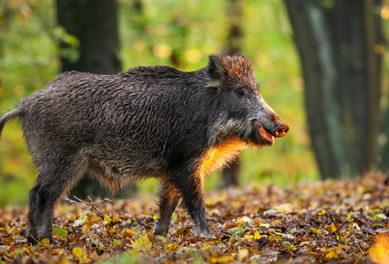
Why Hunt Spain?
Spain offers diversity few countries can match. Hunters can collect four subspecies of ibex, chase red stag during a roaring rut, stalk roe deer in spring fields, climb mountains for chamois, and join traditional driven boar hunts—all within one country. Add in Spain’s culture, cuisine, and history, and the experience goes far beyond the field.
Accommodations range from traditional hunting lodges to luxury hotels near historic cities. Hunts can easily be paired with sightseeing in Madrid, Barcelona, or Granada, making Spain an ideal destination for hunters traveling with family.
New Zealand — Red Stag, Tahr, Chamois, Fallow Deer, Elk & Arapawa Ram
Red Stag
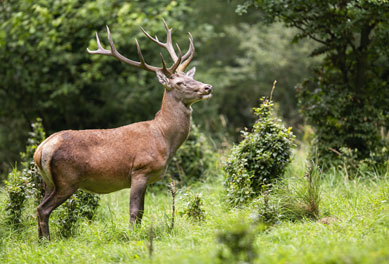
The species most associated with New Zealand is the red stag. Famous for their impressive antler growth, New Zealand red stags can produce massive, multi-pointed racks that are among the most photographed in hunting. The highlight of the year is the rut, known locally as “the roar,” which occurs in March and April. During this time, stags call loudly and aggressively defend harems of hinds, making them more visible and easier to stalk. Hunts typically involve spotting stags from ridges or valleys and stalking into range.
Himalayan Tahr
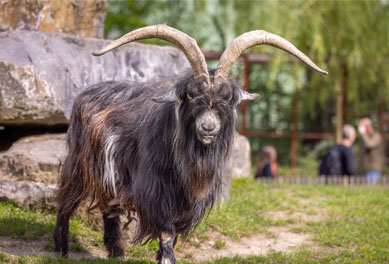
Chamois

Sharing the high mountain habitat with tahr is the chamois, a fast and agile mountain antelope. Chamois hunting demands patience, excellent glassing, and physical fitness. The best time is also May through July, when coats are in prime condition. Many hunters choose to combine tahr and chamois on the same expedition, creating a true alpine hunting adventure.
Fallow Deer
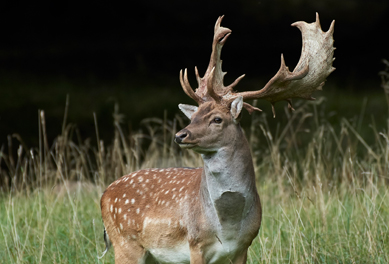
Fallow Deer

Arapawa Ram
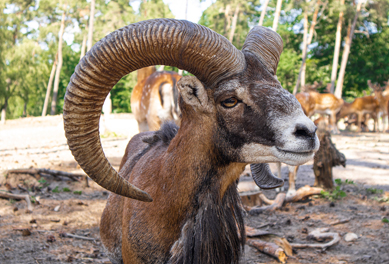
Why Hunt New Zealand?
New Zealand’s combination of species diversity, stunning landscapes, and friendly hunting culture makes it one of the most sought-after international destinations. Hunters can experience high-adrenaline alpine stalks for tahr and chamois, the thunder of roaring red stags in the rut, or more relaxed fallow deer and Arapawa ram hunts.
Seasons are opposite those of North America, meaning hunters can travel to New Zealand in spring and summer at home and hunt during peak rut in the Southern Hemisphere. Many hunts can be paired with sightseeing in destinations like Queenstown, Fiordland, or the Southern Alps, making this an ideal location for hunters traveling with companions.
Argentina — Red Stag, Water Buffalo, Blackbuck, Axis Deer, Wild Boar & Wing Shooting
Red Stag
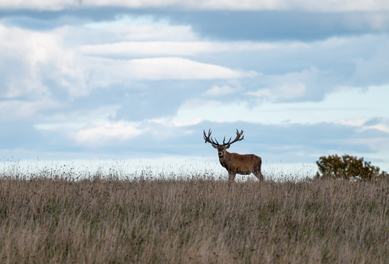
Water Buffalo
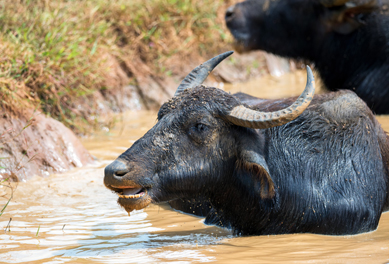
Blackbuck

Axis Deer

Wild Boar

Dove & Pigeon Shooting

Why Hunt Argentina?
Argentina offers a combination of trophy hunting and volume shooting in one destination. Hunters can stalk roaring red stags in Patagonia, pursue exotic game like blackbuck and axis deer, test themselves against massive water buffalo, and finish with high-volume dove shooting—all in the same country.
Seasons in Argentina run opposite to North America, meaning hunters can travel south during March and April to hunt red stag in the roar while it’s spring back home. Add in Argentina’s rich culture, cuisine, and welcoming hospitality, and the appeal goes far beyond the hunt.
Turkey — Bezoar Ibex, Anatolian Red Stag, Wild Boar & Hybrid Ibex
Bezoar Ibex

Anatolian Red Stag
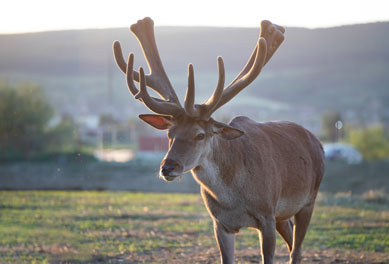
Wild Boar

Hybrid Ibex
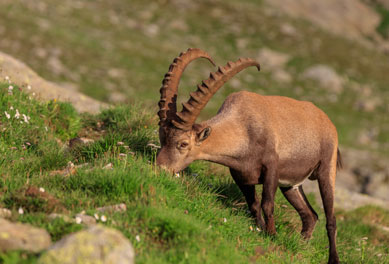
Why Hunt Turkey?
Turkey offers a combination of mountain game, red stag, and traditional boar hunts, all within one country. The Bezoar ibex is a once-in-a-lifetime trophy for mountain hunters, while driven boar hunts deliver excitement and camaraderie. The Anatolian red stag adds a unique twist for deer hunters, and hybrid ibex round out the variety.
Beyond hunting, Turkey provides one of the richest cultural experiences in the world. Hunts often take place within reach of historic cities and landmarks, offering opportunities to combine world-class hunting with sightseeing. Accommodations vary from traditional lodges near hunting areas to comfortable hotels when closer to urban centers.
The mix of trophy quality, diverse species, cultural heritage, and accessibility make Turkey an increasingly popular international hunting destination.
Kyrgyzstan & Tajikistan — Marco Polo Argali & Mid-Asian Ibex
Marco Polo Argali
The Marco Polo sheep is considered one of the pinnacle trophies in international mountain hunting. Known for its enormous, spiraling horns that can reach over 50 inches in length, the Marco Polo is named after the explorer who first described it in the 13th century. These sheep inhabit some of the highest ranges in Asia, often found at elevations between 12,000 and 14,500 feet.
Hunting Marco Polo is physically demanding and requires good preparation. Hunters spend long hours glassing across massive landscapes before attempting careful stalks into rifle range. Success often comes only after days of persistence and patient observation. The prime season is September through December, when weather is relatively stable and sheep gather in more accessible areas.

Mid-Asian Ibex

The Hunting Experience
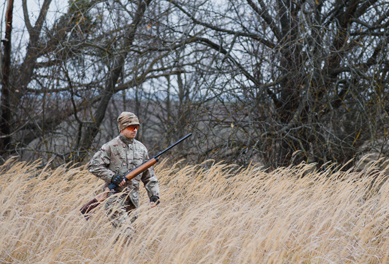
Why Hunt Kyrgyzstan & Tajikistan?
- Marco Polo argali is one of the world’s most iconic big game trophies, sought after by serious mountain hunters.
- Mid-Asian ibex offers an additional, equally impressive mountain hunt often combined with Marco Polo.
- The landscapes of Central Asia provide a truly wild, expedition-style hunting experience rarely matched elsewhere.
- The season (September–December) aligns well with North American hunters’ schedules, making it possible to combine trips in the same year.
For hunters who dream of testing themselves in some of the harshest but most rewarding mountain environments on earth, Kyrgyzstan and Tajikistan deliver an adventure that stands at the pinnacle of global hunting.
Mongolia — Altai Argali, Gobi Argali, Maral Stag, Gazelle & Ibex
Altai Argali
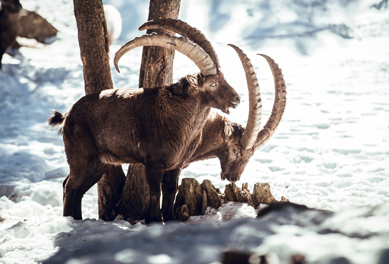
Gobi Argali
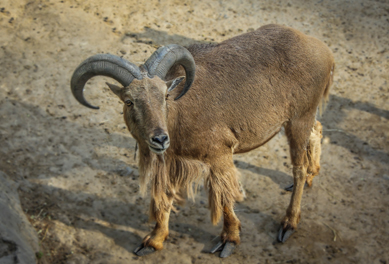
Maral Stag

Gazelle

Ibex

The Hunting Experience
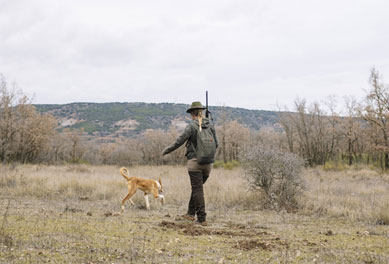
Why Hunt Mongolia?
Mongolia offers a rare combination of world-class trophies and authentic adventure. Hunters can pursue Altai or Gobi argali, add a maral stag during the rut, and round out their trip with ibex or gazelle. Seasons run from July to October, aligning perfectly with North American hunters’ schedules. For those who dream of the biggest wild sheep in the world, Mongolia is the ultimate destination.
Kyrgyzstan & Tajikistan — Marco Polo Argali & Mid-Asian Ibex
Marco Polo Argali
The Marco Polo sheep is considered one of the pinnacle trophies in international mountain hunting. Known for its enormous, spiraling horns that can reach over 50 inches in length, the Marco Polo is named after the explorer who first described it in the 13th century. These sheep inhabit some of the highest ranges in Asia, often found at elevations between 12,000 and 14,500 feet.
Hunting Marco Polo is physically demanding and requires good preparation. Hunters spend long hours glassing across massive landscapes before attempting careful stalks into rifle range. Success often comes only after days of persistence and patient observation. The prime season is September through December, when weather is relatively stable and sheep gather in more accessible areas.

Mid-Asian Ibex

The Hunting Experience

Why Hunt Kyrgyzstan & Tajikistan?
- Marco Polo argali is one of the world’s most iconic big game trophies, sought after by serious mountain hunters.
- Mid-Asian ibex offers an additional, equally impressive mountain hunt often combined with Marco Polo.
- The landscapes of Central Asia provide a truly wild, expedition-style hunting experience rarely matched elsewhere.
- The season (September–December) aligns well with North American hunters’ schedules, making it possible to combine trips in the same year.
For hunters who dream of testing themselves in some of the harshest but most rewarding mountain environments on earth, Kyrgyzstan and Tajikistan deliver an adventure that stands at the pinnacle of global hunting.
Scotland — Red Stag, Roe Deer, Sika Deer & Driven Birds
Red Stag
The red stag is the most iconic big game species in Scotland. Hunting takes place primarily in the Highlands, where open heather moors and steep hills create challenging conditions. Stag stalking involves long hikes, often in wet or windy weather, followed by careful crawling into shooting position. The rut, or “the roar,” occurs in September and October, when stags call and fight for dominance. This is the most exciting time to hunt, but stalking is possible from early autumn through the end of the season.
Scottish red stag hunts are not only about the animal itself but also about the tradition. Hunters are often accompanied by a professional stalker and may see gamekeepers or ghillies carrying rifles or antlers in the traditional style. The entire experience reflects centuries of Scottish sporting heritage.
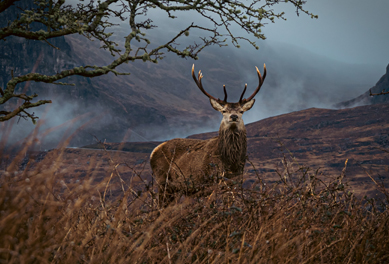
Roe Deer
Roe deer are another important species in Scotland, offering a smaller but equally rewarding quarry. Roe are widely distributed across the country, with hunts often conducted in farmland edges, forests, and rolling hills. The season for roe deer is long, but the best hunting occurs in spring and summer (April through July), when bucks are in prime condition, and again in late July and early August during the rut. Stalking roe deer requires patience, glassing, and quiet movement, making it an excellent contrast to the more physical red stag hunts.
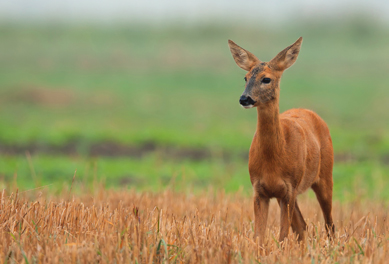
Sika Deer
In some parts of Scotland, particularly the Highlands, sika deer provide an additional hunting opportunity. Originally introduced from Asia, sika thrive in forests and moorlands, offering a wary and challenging hunt. Sika stags roar during their rut in October, producing a haunting whistle-like call. Their secretive behavior makes them a difficult quarry, adding variety for hunters pursuing multiple species in one trip.
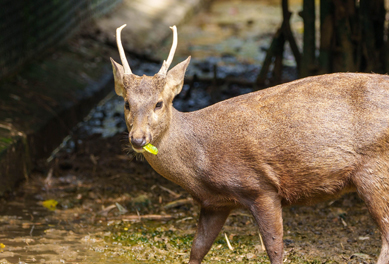
Driven Birds
Scotland is also world-renowned for its driven bird shooting. Estates across the country host traditional shoots for pheasant, partridge, and grouse. The grouse season begins in August with the famous “Glorious Twelfth,” marking the start of one of the most celebrated shooting traditions in Europe. Hunters line pegs while beaters drive birds overhead at high speed, demanding quick reflexes and precise shooting. These shoots are as much about camaraderie and tradition as they are about bag numbers.
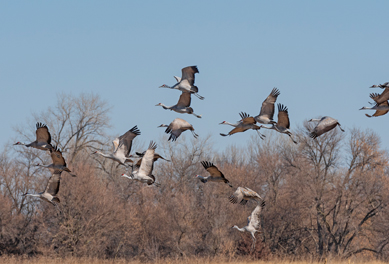
Why Hunt Scotland?
Hunting in Scotland is about more than trophies. It is about walking the same moors and hills that hunters have crossed for centuries, experiencing the tradition of stalking red stags with a ghillie, and joining in driven bird shoots that are part of national culture.
Scotland also offers easy travel from North America and Europe, with hunts that can be combined with sightseeing in Edinburgh, Inverness, or the Highlands. Accommodations range from traditional sporting lodges to historic castles, adding further atmosphere to the trip.
For hunters who want a blend of challenging game, rich tradition, and cultural immersion, Scotland is one of the finest destinations in the world.
Greenland — Muskox & Caribou
Muskox
The muskox is one of the most distinctive animals in the Arctic, recognized by its thick, shaggy coat and large, curved horns. These prehistoric-looking animals are built to withstand the harsh conditions of Greenland, with dense underwool (qiviut) and powerful bodies.
Hunts for muskox in Greenland take place in both spring and fall. Spring hunts in March are conducted in snowy conditions, often with travel by snowmobile or sled. Hunters stalk muskox across frozen ground, bundled against subzero temperatures. The payoff is an unforgettable experience in one of the world’s harshest environments.
Fall hunts run from August through October, when muskox are more active and spread across tundra landscapes. Hunters pursue them on foot, often glassing from ridges and moving in for a stalk across open ground. Bulls are targeted for their heavy bosses and sweeping horn curls, with mature trophies creating truly impressive mounts.
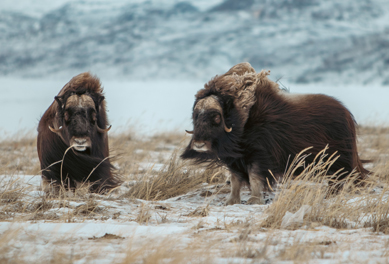
Caribou
Greenland is also home to herds of caribou (also called reindeer in this region). These animals roam the tundra in large numbers, moving between summer feeding grounds and winter ranges. Caribou are hunted in August and September, when animals are in excellent condition and antlers are fully developed.
Hunts usually involve glassing across rolling tundra, spotting herds from distance, and then planning stalks to intercept them. The wide-open country requires patience and good shooting, as getting close can be difficult. Caribou trophies are striking, with sweeping antlers and velvet or hard horn depending on the timing of the hunt.

The Hunting Experience
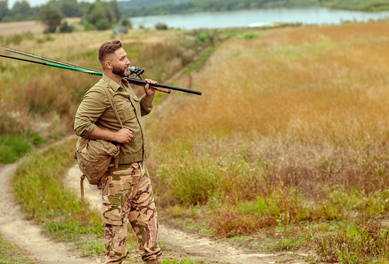
Why Hunt Greenland?
Greenland is not a destination for casual hunters—it is for those who want adventure, wilderness, and truly unique trophies.
- Muskox hunts offer both spring and fall options, with Arctic survival experiences unlike any other.
- Caribou provide classic tundra hunting with large herds and spectacular antlers.
- Remote, authentic experience in one of the most untouched landscapes on earth.
The hunts in Greenland are as much about the place as the animals. The stark beauty of the Arctic, the cultural experience of Greenlandic villages, and the sense of accomplishment from taking game in this environment make Greenland one of the most unique hunting destinations in the world.
Plan Your International Hunt
An international hunt is more than a trip. It is an adventure that combines new landscapes, new cultures, and new trophies into a story you will tell for the rest of your life.
From the deserts of Mexico to the mountains of Mongolia, from the red stags of New Zealand to the wild buffalo of Argentina, the opportunities are as vast as the landscapes themselves. Each destination has its own rhythm, its own challenges, and its own rewards—but every hunt shares the same foundation: professionalism, exclusivity, and world-class game.
Our team ensures you are never left to guesswork. Travel logistics, trophy care, season timing, and outfitter coordination are all handled with the same clarity and precision that define our Canadian and African hunts.
These hunts are limited, often by quotas or short seasons, and they sell out quickly. If you have been waiting for the right time to pursue international game, the time is now.
